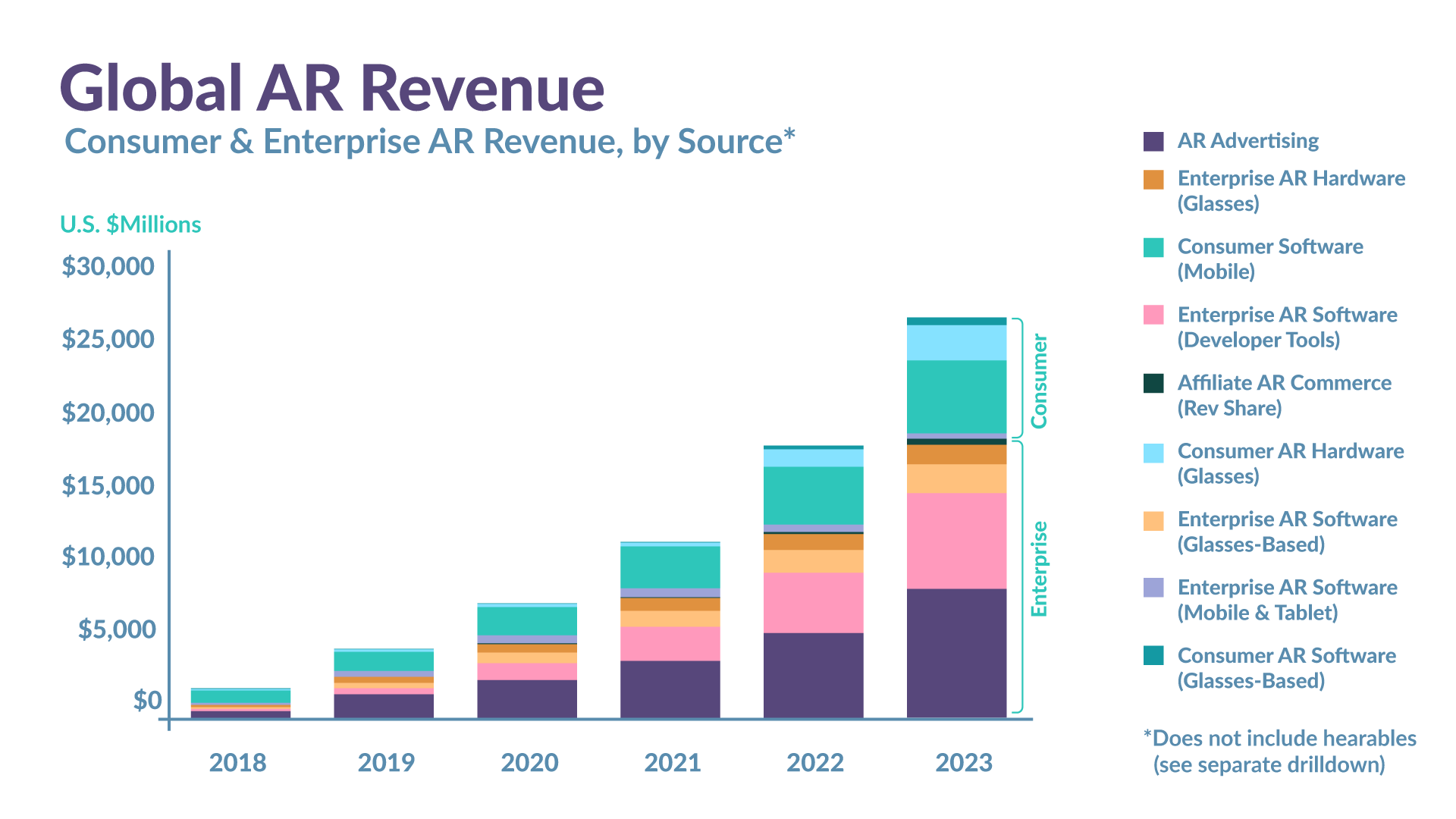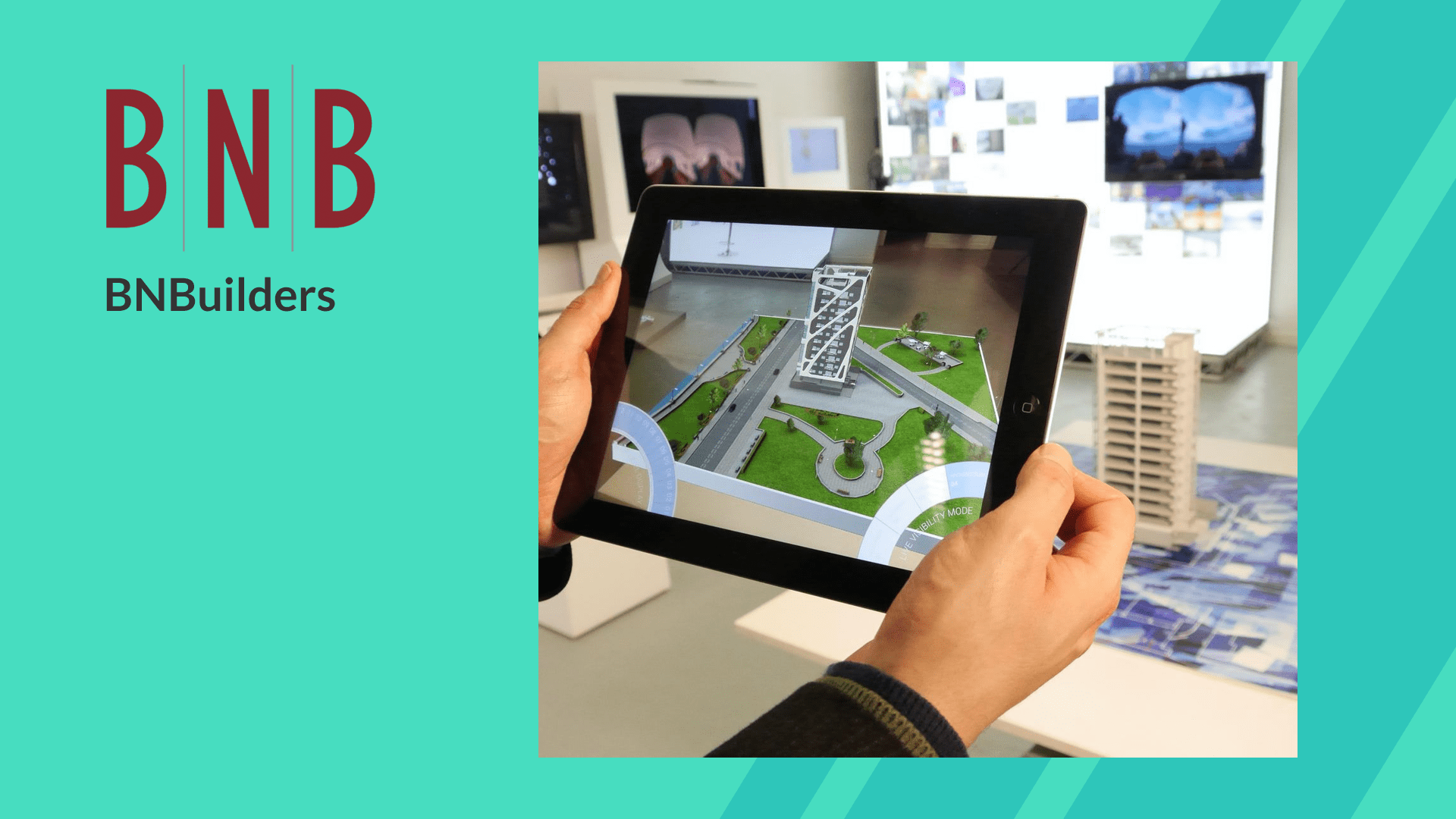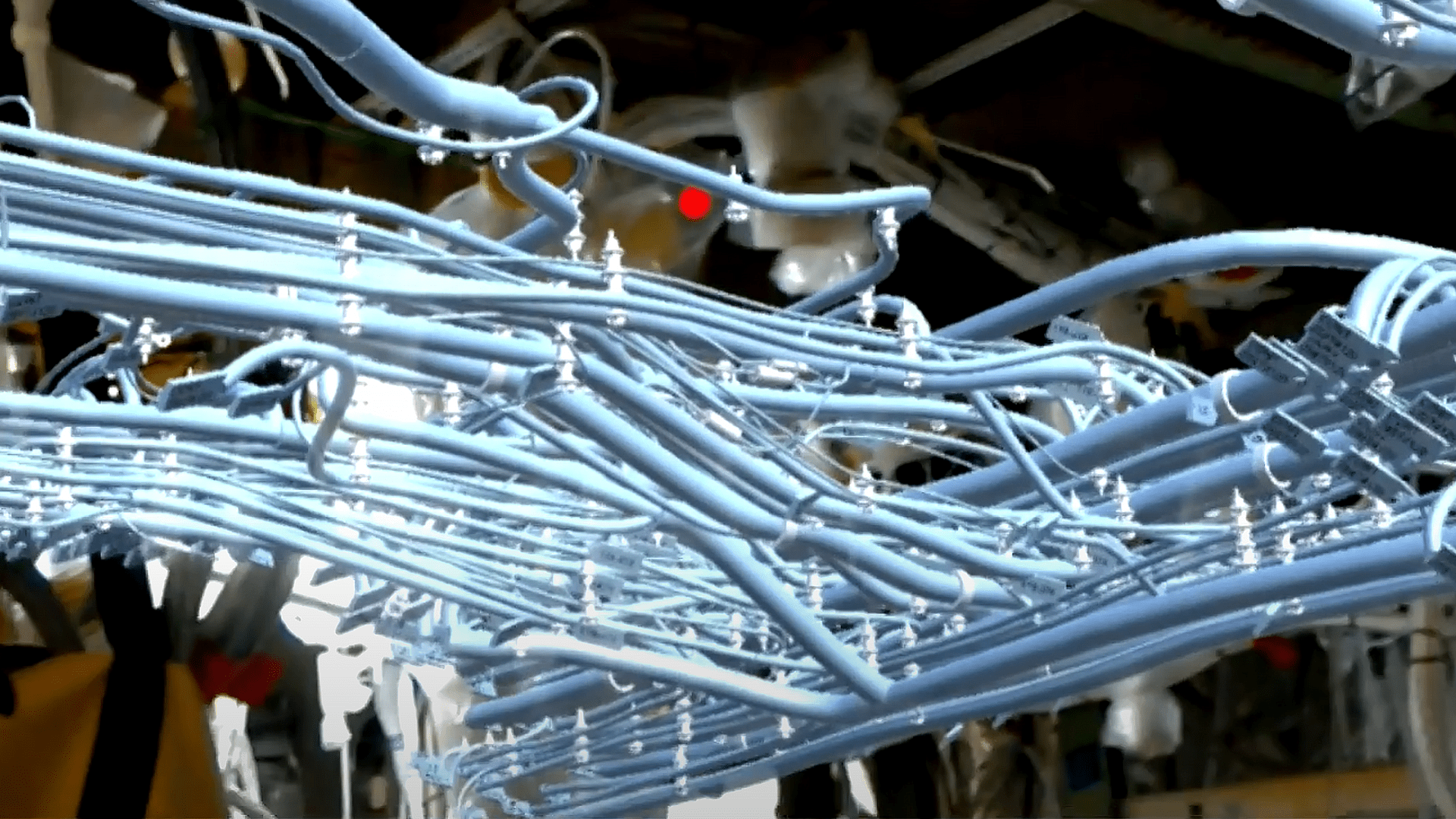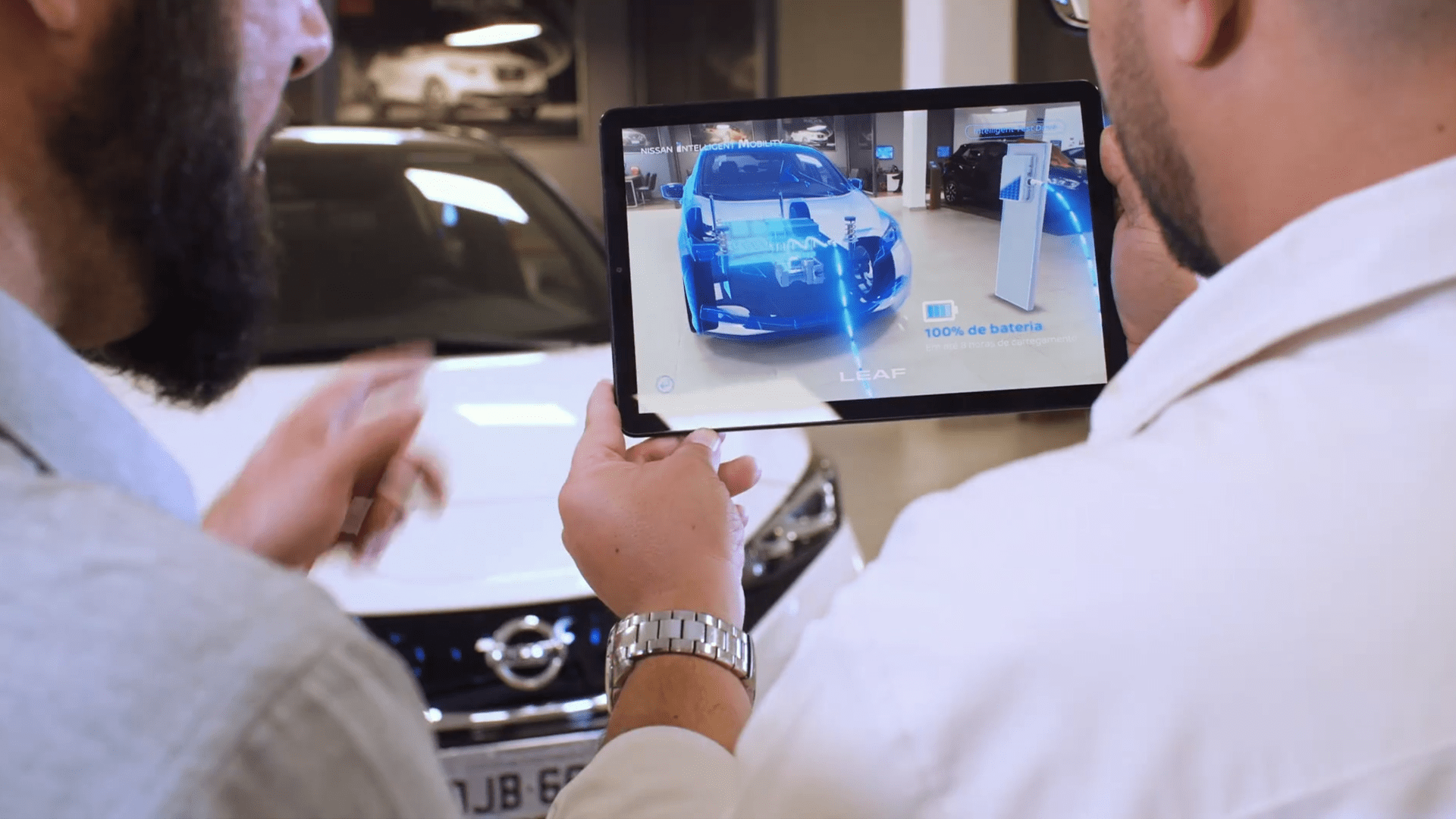Augmented reality is a technology that allows applying digitally created content to real-life settings using the device’s built-in camera. Some of the most commonly used AR applications are Word Lens on Google Translate, Snapchat, Google Lens, and even Instagram filters. AR might seem like futuristic technology, but it is highly applicable even now. Translating a sign or using a Snapchat mask, most of the smartphone owners are utilizing augmented reality. Recent studies estimate that by 2023 there will be around 2.4 billion augmented reality app users in the world. This technology is expected to reach $70-$75 billion in revenue by 2023.
This relatively new technology can be highly beneficial for the business. It can help both with optimizing inside processes and reaching new consumers. Some of the benefits of AR in business include:
- Optimization of inner processes and manufacturing
- Effective employee learning and training
- Marketing advantage: using AR in ads
- Better customer service
- Creating unique products on the market
The benefits of using augmented reality in business are quite clear: it helps provide improved service while saving time and resources. But what are the drawbacks of this technology?
First of all, despite being on the market for more than 20 years, augmented reality is quite new for many people as they might be reluctant to use something so different from their usual routine. Implementing AR inside the company might be a challenge at first, but only until the employees see its benefits.
One more drawback can be the price of implementing augmented reality. Developing an AR app can be quite expensive, especially for smaller businesses. The cost of such technology will rise if you are willing to use specialized AR hardware, such as glasses.
In this article, we list some of the most compelling augmented reality use cases as well as discuss wheres and hows of augmented reality app development.
Top industries leveraging AR
Augmented reality is a technology that is beneficial for virtually any industry, from game development to manufacturing. It offers new engagement opportunities for the users, facilitates learning or working processes, and is simply a great entertainment tool. Let’s take a look at the industries that have already started utilizing AR to their advantage.
E-commerce
Retail businesses can use augmented reality apps to provide better service using 3D modeling. People often have a hard time visualizing a new chair in their flats or understanding if a coat would fit them. 3D models can help with this. More and more retail brands use mobile app development services to build AR apps that help consumers understand what exactly they are getting. Makeup, clothing, furniture, cars, the list can go on. It is clear: augmented reality is a way to enhance an online shopping experience.
IKEA created an IKEA Place app that shows how a particular furniture piece would look in your interior. With a digital true-to-scale model, the app lets you put the item in your space to help with decision-making.
British online fashion brand ASOS added the virtual catwalk feature to its app in 2019.
One tap on the AR hexagon icon, and the virtual model appears in a real-life setting to demonstrate the clothing items. The model also moves around, allowing consumers to view the clothing from different angles. Such an unusual approach helps ASOS stand out from the crowd and significantly boost its customers’ online shopping journey.
Additionally, during the lockdown, ASOS used AR to demonstrate new clothing on models. The item is digitally mapped on the model’s image, considering the size, fit, and cut. Should we mention that such an idea not only improved customer satisfaction but also gave ASOS quite a few press appearances?
Augmented reality can also be extremely helpful at the post-purchase stage. Many companies offer AR maintenance instructions and guidelines. It is a great way to show your customers the support and care and reduce warranty and maintenance expenses. Self-service apps are one of the options for providing customer service.
For example, Mercedes offers support via its app Ask Mercedes. It is a virtual assistant app that combines chatbox with augmented reality. AR allows the user to understand the functions of the car parts interactively. Pointing the smartphone’s or tablet’s camera on the particular object, the user gets the explanations on how it works.
E-learning
Augmented reality has a great potential in taking e-learning software to the next level. Augmented reality has proven its usefulness in the learning process. From universities to big corporations, this technology helps people perceive new information faster and more effectively. Visualization of otherwise abstract notions and step-by-step guides reduces learning time and increases the understanding of the topic. What is more, thanks to AR, information is accessible more than ever: no need for long Internet browsing or booking a consultation with an expert.
One example of AR use in e-learning is the Civilizations app launched by the BBC. With this app, the users can explore ancient artifacts from the British museums layer by layer: from their present appearance to how they looked when they were first made.
Augmented reality is applicable to learners of all ages: from kindergarten students to employed adults. For instance, the Narrator app helps children learn how to write: it takes handwritten letters and creates an AR animation.
E-government
Augmented reality can be highly applicable in the area of e-government solutions. AR can aid with data structuring and visualization, conveying information, and providing governmental services. Immediate translations, graphic instructions, presenting new projects – these are only some of the possible AR applications.
The idea of AR in the public sector is relatively new; in the US, several programs include implementing AR in the e-government processes, such as Emerging Citizen Technology and Digital.gov.
Healthcare
Healthcare is the area where augmented reality has the potential of becoming indispensable. AR aids with diagnostics, surgeries, and other medical processes. The visualization helps healthcare professionals locate the internal organs and bones, overlay X-ray results, see the patient’s health history, compare the symptoms with possible diagnoses, and much more.
Additionally, augmented reality can be beneficial not only for the professionals but also for patients. They can easily access information to educate themselves or communicate with the doctor.
One of the most promising medical AR companies is the US-based Augmedics. They created an augmented reality guidance system for spine surgery called xvision. It allows surgeons to visualize the patient’s spine anatomy via a transparent headset instead of looking on a separate screen. Such an approach significantly improves the process as it gives the surgeon better control over the process, making the surgery safer and quicker.
One more excellent use case of augmented reality in healthcare is SentiAR. The platform features a 3D visualization of a patient’s heart anatomy to assist with diagnostics and surgeries. The solution can be useful both for the patient and the doctor: it is a way to analyze the possible condition, illustrate and explain it to the patient, and make the treatment process simpler.
Gaming
Gaming is probably one of the most apparent industries for augmented reality use. The most popular AR use case ever, the game app Pokémon Go, introduced many people to this technology. It is true: augmented reality is highly applicable in the game apps. It makes the gaming experience incredibly immersive and personalized as the player is still in real-world settings.
There are many excellent AR gaming app examples. Apart from the well-known Pokémon Go, users can enjoy such AR games as Zombies, Run!, where the AR zombies inspire many users to do their daily exercise, or AR option of Geocaching, the largest treasure-hunting app.
Media and entertainment
One of the most common contemporary uses of augmented reality is in the media and entertainment industries. Augmented reality is still a comparatively new and unique technology – it attracts attention and makes the company stand out. Launching an AR app is a way to gain brand recognition and make your marketing strategy highly engaging. People like trying new things, and if you make this opportunity free and easily accessible, you won’t go unnoticed. There are many ways media and entertainment software solutions can incorporate AR: from makeover apps and filters to having monsters and UFOs on bus stops – exactly what Pepsi did.
Storytelling is a pillar of marketing and entertainment industries, and augmented reality is a perfect storytelling tool: it illustrates and extends the stories. The American newspaper The Washington Post enhanced its art and architecture article series with an AR app feature. They introduce six architectural structures and, with the aid of AR, demonstrate how those buildings were constructed step-by-step with all the problems faced and their solutions. They also presented an article that includes an AR-powered visually dynamic view of the dinosaur skull if opened from an iOS device.
Construction and design
AR is beneficial for design and construction: 3D modeling allows seeing the object in its future placement. It shows not only the object itself but all of the layers of materials. AR is great for planning and visualization, as well as the facilitation of the construction process. Using this technology helps see if the current work matches the original design, if there are any infrastructure problems, and overall aids with avoiding misplacements and construction errors.
The US-based BNBuilders used augmented reality both to present the designs to their clients and facilitate the construction process. On a construction site, they offer the customers an iPad or a smartphone with a future work model in the existing surroundings. Needless to say, such an approach helps with communication as the clients can see if the planned project is precisely what they wanted.
Utilizing AR for internal business processes
Augmented reality in business can be used not only for creating innovative products but also for streamlining existing processes and thus maximizing the enterprise performance. The companies can benefit from AR in various ways, from reducing production errors to teaching new employees.
Work optimization
Augmented reality has proven its usefulness in production and manufacturing. AR helps increase the quality of inner processes while cutting down the time spent on them. With AR, every object is enriched with some additional information, which enhances workplace productivity and efficiency. The employees don’t have to look up some necessary information each time or rely on their memory. Hands-free devices, such as AR glasses, are especially useful: the workers can access all the data without interrupting the process. What is more, AR also improves team communication, providing better real-time interaction.
DHL shows the effectiveness of AR in logistics: they use it for warehouse operations, driving, and deliveries. Smart glasses and heads-up displays provide task information, scan barcodes, and give navigation instructions. The company shares that using AR glasses during the picking process in warehouses can decrease errors by about 40%.
Workplace training
Big companies have already started using augmented reality for training: the process becomes faster with fewer safety risks. For example, Boeing shares the first results: the company introduced augmented reality animated instructions on tablets. The group of trainees who used AR tablets was 30% faster and 90% more accurate on their first tries than the groups using only a PDF instruction on a tablet or desktop computer.
Other uses of AR
It turns out that not only humans can benefit from augmented reality. The US Army revealed that they are working on AR goggles for dogs. Of course, dogs won’t use them for entertainment — the glasses are designed to let them receive commands remotely.
Usually, military dogs get commands via hand signals or laser pointers: it requires the presence of the handlers, which can be quite dangerous considering that, in most cases, we are talking about warfare. Also, there is a limit to how far the dog can go from the handler to still see the commands.
AR glasses allow the handlers to give commands remotely: while dogs see visual indicators imitating commands, handlers can watch live footage of what the dog sees from a built-in camera. Now, the prototypes are wired, but Command Sight, a private company that is developing the solution, says that the future versions will be wireless. The AR glasses are to be designed for each dog individually to place the optics correctly. Of course, there is still a lot of work to be done — the researchers are now studying the canine vision and cognition specifics.
One more use case of AR technology relates to virtual technical assistants and contactless provision of field services. The latter is especially relevant nowadays when Covid-19 has crippled many businesses whose services rely on physical engagement with customers. A case in point is TechSee, an Israeli startup that combined AI, computer vision, and AR to create an efficient self-service app and enable remote technical assistance. With Eve, a visual tech assistant, TechSee’s customers can receive step-by-step setup guides enhanced with AR visuals and directions. As for field services, all the interaction between a technician and a client happens through a smartphone, tablet, or laptop camera. In this case, AR tools are used by the technician to pinpoint exact areas that should be checked by the client.
AR is also extremely helpful in navigation. In 2019, Google Maps released Live View, a beta feature providing a real-world view of the user’s location empowered with AR visual guides. One tap on the landmark icon, and the app will start scanning the surroundings to give you the right directions supported with AR. This year, Google Maps enhanced its Live View feature with AR landmarks that indicate the most famous or well-recognizable places nearby to help people orient themselves even better. So far, the landmarks are available for residents in 25 cities worldwide with more coming in the future.
Speaking of navigation, AR technology has been successfully applied in the travel and hospitality industries. For instance, Holiday Inn, a world-known hotel chain was the first to utilize AR: back in 2012, it entertained its guests by allowing them to view realistic virtual depictions of famous athletes simply by pointing their smartphones. Gatwick airport in the UK went even further and developed a passenger app with AR functionality to ease the navigation across its large site. With over 2000 beacons installed in the airport, passengers can use the app’s AR technology to easily get to their destination points.
These are definitely not all AR uses as this technology can be integrated almost in every industry, and vendors searching for ways to stand out from the crowd apply AR to fit their unique business needs.
AR development: the tech stack
Like virtual reality, augmented reality might seem like an advanced technology that is not very accessible for businesses. But that is not true: with the right development team creating an AR app is a feasible idea and one step forward to help your business thrive.
The necessary hardware is quite simple: a smartphone or tablet is more than enough for most ideas. However, AR also has a place in desktop application development, especially when a larger display and more powerful hardware are needed. For example, Oculavis, an AR assistant for machinery & equipment manufacturers, is available for smartphones and tablets and desktops running Windows and macOS.
If you would like to implement augmented reality in manufacturing or construction, you might be interested in hands-free operation tools, such as AR glasses. Many companies offer smart glasses, prices starting from $700 for Moverio BT-300 by Epson to more expensive listings by Google and Microsoft.
Most often, augmented reality is accessed via apps. Of course, developing an AR app is quite a complex task. There are two main types of augmented reality apps: marker- and location-based. Marker-based apps use the image recognition system to start the AR display. In contrast, location-based apps rely on GPS, accelerometer, and digital compass information to add contextual augmented reality to the physical surroundings. There is also SLAM (simultaneous localization and mapping) augmented reality when multiple sensors are used.
Developing an augmented reality app involves the knowledge of specific AR development SDKs and frameworks, such as Wikitude or Vuforia. Apple and Google offer their own AR development kits ARKit and ARCore. The choice is quite vast, so the AR developers can choose the kit that suits their needs the best.
3D artists draw and create models, working in a team with the developers. The developers incorporate the models into the app using Unity 3D: a cross-platform engine, meaning that different operating systems can support it. Also, Unity 3D allows the developer to see how an app will look like on a device.
AR development: the most used SDKs
| SDK | |
|---|---|
| FEATURES |
|
| SUPPORTED PLATFORMS | Android, iOS, Windows for tablets, smart glasses |
| SDK | |
|---|---|
| FEATURES |
|
| SUPPORTED PLATFORMS | Android, iOS, UWP, and smart glasses |
| SDK | |
|---|---|
| FEATURES |
|
| SUPPORTED PLATFORMS | iOS |
| SDK | |
|---|---|
| FEATURES |
|
| SUPPORTED PLATFORMS | Android, iOS |
| SDK |  |
|---|---|
| FEATURES |
|
| SUPPORTED PLATFORMS | Android, iOS, Linux, Windows, Mac OS, and smart glasses |
In-house development or hiring a team?
As we mentioned above, augmented reality is quite new and complex technology. Is it better to hire a development team in-house or trust an agency with the project?
Both approaches have their pros and cons. While having an in-house team gives you more control over their work, it is not that easy: you have to know how to organize the workflow, AR app development specifics, and often manage the team of people who never worked together before. What is more, not that many developers specialize in it, let alone head hunting for true professionals in this area, so hiring a skilled team might come as a challenge and take time.
On the other hand, an app development agency has already formed a highly skilled team with AR development experience. It might feel like you have less control over the results, but with the right communication process, there should be no problems. Working with the agency saves both time and money: the rates vary greatly in different parts of the world.
Is AR app development expensive?
Not all mobile development companies work with AR. There are fewer professionals in this area, making the price for such type of app development significantly higher. Creating marker-based AR apps is easier and less costly than location-based ones as the latter requires sensor integration.
The rates for an augmented reality app depend on such factors as features, app complexity, technologies used, etc. First of all, it is essential to decide on the platform: iOS and Android application development vary in prices. Android apps are harder to build, which makes them more expensive. The biggest price factor is app features and complexity: many details influence the cost – from the complexity of 3D models to the payment and analytics systems involved. Of course, the experience and competencies of the developers impact the price as well. The technology stack is important, too – the developers can use free, open-source frameworks, or commercial ones.
The project rates vary around the globe, with the lowest prices in India and the highest in North America. While choosing the right team, you should pay attention to such factors as the IT market’s development level in a particular country, the costs, and communication possibilities. Not all IT companies can use English for communication or work during business hours in your country.
Suppose you are looking for the right AR app development team. In this case, you might consider hiring a professional team from Eastern Europe: the companies here hire highly qualified specialists as the competition is rather serious. The prices are lower compared with North America or Australia. The minimum price for a simple AR app might start from $30 000 going up as adding more complex features.
Summing up: does every business need AR?
To sum up, augmented reality is gradually taking over the technology world. Today, more and more companies are choosing to implement AR to optimize their internal business processes or take customer relations to a new level. While being still new and quite pricey to develop, augmented reality might not be the first choice for some enterprises, but its benefits for numerous areas, from health care to marketing, are becoming more evident. Augmented reality apps can be a great business upscaling solution. AR is the future of communication: as such, it has all the chances to penetrate all vital spheres of our lives. With the right development team, launching an augmented reality app will be smooth and rewarding.







